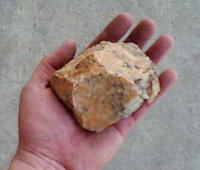
There is another side to the equal weight of a pound of rocks or feathers. I argued in a previous posting that many people spend too much time over thinking the choice of what types of foods to eat or diets they should follow to reduce body fat and get in optimal physical shape. At the end of the day, you will gain or lose weight based on the ratio of calories consumed versus calories burned no matter what strategy you employ.
In short, rocks are foods that are of high caloric density and feathers are those that are not. If you set an upper limit of calories per day, simple arithmetic will tell you that you that you cannot eat very many of rocks before you reach your limit. It is a better strategy to eat plenty of feathers throughout the day to control your weight.
What if we applied this concept to business development? Does it apply? Surprisingly, it does, but in completely the opposite fashion. This is especially true for professional service providers such as lawyers, bankers, accountants, doctors and venture capitalists where business development time is at a premium. The fact that they have to practice as well as develop business puts an extreme premium on their time.
First, I will switch all the terminology and metaphors around so that they pertain to generating new revenue. Second, I will create a new simple formula to follow for successful rainmaking. Finally, we will show how this all applies to the real world of business development for a busy professional.
The Terminology
Remember the point of the food analogy. A pound of rocks and feathers are equal when it comes to calories. Rocks symbolize high-density calorie foods and feathers symbolize low-density ones. For example, you can eat four Big Macs (rocks) or 35 apples (feathers) and still take in the same amount of calories. Let us leave what is better for your arteries out of this for now!
However, think about this in terms of time. If you wanted to eat many calories as quickly as you can, Big Macs are the way to go. In about 20 minutes, you could get all your calories for the day. You would probably be miserable, but there is no arguing that it would take a great deal longer to eat 35 apples!
Business development for the busy professional is all about managing their time. You want to be able to generate a certain amount of new business in the shortest amount of time. Since they may only have 5-10 hours a week to spend on revenue seeking activities, high density is the way to go.
You can divide such activities into rocks and feathers as well. Rocks would be face-to-face meetings with prospects and clients, phone calls and other one-on-one type activities. Feathers would be passive marketing activities such as writing articles, giving speeches and engaging in other mass communications efforts. Both are very important, but they also have different densities in terms of generating revenue.
One-on-one interaction with clients and prospects by an individual is much more effective per hour than passive marketing when you look at generating actual revenue (not awareness or recognition). If you set a revenue goal for yourself and have a certain amount of hours to spend attempting to achieve it, you must pay attention to the mix of activities you are engaging in. For purposes of illustration, we will assume that spending one hour in front of a client (a Rockhour) is three times as effective in generating revenue than an hour writing an article (a Featherhour).
So, here comes the math portion of our discussion. Let us take the analogy a step further and say that every Rockhour generates on average $75 of revenue and every Featherhour can produce $25. I bet you can see what direction this discussion is starting to take…
The Formula
If you are going to manage the mix of your activities to maximize the effectiveness of your limited business development time, you need to keep in mind this formula:
(Rockhours)($/Hour) + (Featherhours)($/Hour) = Revenue Generated/Hour
By adding the sum of your Rockhours times how much revenue they typically generate to the number of Featherhours times revenue they generate, you get a measure of total dollars per business development hour according to your mix. Here is a quick example:
(5)($75) + (15)($25) = ($750)/20 = $37.50 generated per hour
Simple, right? Now look how the results change by manipulating some of the variables:
(10)($75) + (10)($25) = ($1000)/20 = $50 generated per hour
By spending a greater portion of time on activities in front of potential clients, you can spend the same amount of time and have a 33% increase in effectiveness AND generated revenue! For someone that has finite limits on their non-billable time, this is a critical concept to know.
The Point
Time is the enemy when it comes to business development. While marketing and communications activities are essential in helping to develop face-to-face opportunities, you need to spend as much time as possible in client-facing situations to maximize your results. These are the “rocks” of business development: high-density efforts to get to the revenue goal as fast as possible.
So, a pound of rocks and a pound of feathers still weigh the same. However, when you need to make choices as to which ones will help you get to the end goal quickly and efficiently, pay attention to the mix. Using rocks will tip the scale quicker.


